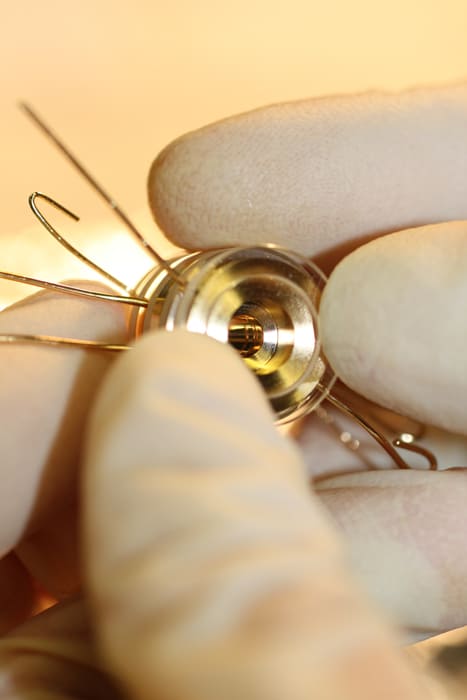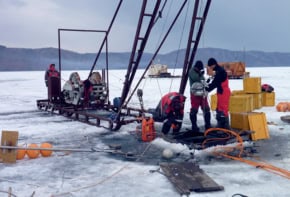
The most precise measurement ever of the proton’s magnetic moment has been made by an international group of physicists. The new result – combined with a similar measurement planned for the proton’s doppelganger, the antiproton – could help explain one of the deepest mysteries of physics – why the universe’s matter seems to vastly outweigh its antimatter.
Every fundamental particle has a nearly identical antiparticle with opposite electric charge. Physicists’ leading theories indicate that particles and their antiparticles were created in equal amounts during the Big Bang and should have annihilated each other long ago. But the universe is full of matter and lacks antimatter, suggesting that an undetected difference might exist between the two.
Minute differences
One possible clue about the difference could lie in tiny discrepancies between the magnetic moments of particles and their corresponding antiparticles. Any difference would be the first-known violation of a fundamental principle that physicists call charge–parity–time (CPT) symmetry. In 2013 researchers working at the Antihydrogen trap (ATRAP) experiment at CERN set the record for the most precise comparison between the magnetic moments of the proton and the antiproton, but the scientists found no difference between the two.
Now, Klaus Blaum, of the Max Planck Institute for Nuclear Physics in Germany, and colleagues are seeking an even more stringent CPT symmetry test. They used a cylindrical device called a Penning trap to confine a single proton using magnetic and electric fields. The trap’s magnetic field causes the proton to circle the cylinder’s axis at a rate known as its cyclotron frequency. The field also makes the direction of the particle’s spin precess like a spinning top, but with a different frequency. From the ratio of these two frequencies, scientists can calculate the particle’s magnetic moment.
Double trap
Measuring the cyclotron frequency is relatively easy, but the precession frequency is harder to pin down. For this reason, Blaum’s group built on a 2008 technique developed by another group of researchers to precisely measure the magnetic moment of the electron. In that work, the researchers applied a second magnetic field that caused the precessing electron to change how it oscillates along the cylinder’s axis. The oscillation frequency then changes slightly again when the particle’s spin flips from pointing up to pointing down, so by forcing a spin flip and measuring the resulting frequency shift, the scientists were able to determine the electron’s precession frequency and thus its magnetic moment.
To apply this technique to the proton’s much smaller magnetic moment, Blaum’s group developed what it calls a “double Penning trap”. In one trap the researchers determined the proton’s spin state, using a technique they reported in 2011. They then shuttled the proton to a second trap, where they measured the particle’s cyclotron and oscillation frequencies. The researchers repeated the process thousands of times over four months, eventually determining the proton’s magnetic moment to a precision of just over three parts in a billion. This figure is around 760 times more precise than what the ATRAP group achieved in 2012.
“I congratulate this team for showing it could do [this measurement] with the proton,” says Gerald Gabrielse, at Harvard University, who is the ATRAP spokesperson and was also involved in the 2008 research. But he notes that without the antiproton measurement, physicists are no closer to understanding matter’s dominance.
Blaum says his team will soon take that measurement. Team member Stefan Ulmer of RIKEN, a research institution in Tokyo, has already installed a double Penning trap on CERN’s Antiproton Decelerator, which will begin producing particles this summer. Within a year after that, Blaum thinks he and his colleagues should know whether the antiproton’s magnetic moment differs from that of the proton at the precision they have achieved. But Blaum adds that as his “trust in CPT is very high”, he is not betting on a discrepancy.
The research is published in Nature.




